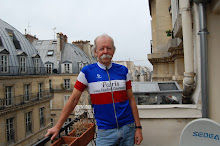I could get some aluminum paste and put the barrel adjuster back together. It would never move, it would be fragile, it would not adjust anything, but it would be a smaller cosmetic disaster.
I got a drill bit a size smaller than the opening in the frame and drilled out the residue of the stock adjuster. And decided to head to the hardware store for some aluminum paste. I could affix the adjuster back into the spot in the frame, drill a small hole to run the cable through and accept what I had.
On the way I stopped at the shop where I bought the frame, deciding to take a stab at the possibility that a replacement adjuster could be obtained from the manufacturer. It would mean a several week wait which would mean I couldn't ride the new bike. But I do have a really nice steel bike that I could continue to ride in the meantime, it was worth a try.
I looked up the manager who had previously helped me with the frame purchase. I asked him in a very general way about barrel adjusters. He said, "Sure, wait a minute." I waited. He went in the back room and brought another set out.
For which he refused to accept payment.
They fit, they look a little different than the originals but they turn in the threads, they adjust.
This is the bicycle fully assembled except for the bar tape. Added since the last picture yesterday are the chain and the pedals, Speedplay X-1s.
 Yesterday's final picture is of the bicycle all cabled up awaiting adjustments. Before you can adjust the derailleurs you have to install the chain. I have installed chains before. You take off the one on the bike and lay it down on the floor. You lay the new one down next to the old one and shorten the new one to be the same length as the old one, then install. This a little trickier if you don't have an existing chain to make the comparison.
Yesterday's final picture is of the bicycle all cabled up awaiting adjustments. Before you can adjust the derailleurs you have to install the chain. I have installed chains before. You take off the one on the bike and lay it down on the floor. You lay the new one down next to the old one and shorten the new one to be the same length as the old one, then install. This a little trickier if you don't have an existing chain to make the comparison.I checked the usual internet resources and found the information I needed on the Park Tool website. They give a formula:
Simple equation: L = 2 (C) + F/4 + R/4 + 1
L = Chain length in inches. Round the final result to closest whole inch figure.
C = Chain stay length in inches, measure to closest 1/8”. Chain stay for this purpose is defined as distance from bottom bracket center to rear hub center.
F= Number of teeth on largest front chainring.
R= Number of teeth on largest rear cog.
And I calculated the chain length.

The adjustment of the two derailleurs is actually fairly straightforward. Both Park Tool and the manual with the parts give step by step instructions. The issues are high and low limit adjustments and cable tension. You follow the steps, no single step of which is complex or difficult, and it works.
So here I am riding my bike. The bike now has black bar tape, the more or less industry standard Cinelli cork, and a Sigma bicycle computer. Except for that it is pretty much the same as it is in the living room in the previous picture.
This final picture is from somewhere on the road on Day 4 of the 2005 Ride Across Minnesota, the ride from Giants Ridge to Two Harbors. The bicycle functioned perfectly that day and in fact, has functioned perfectly every single day since I finished the build. I have adjusted the barrel adjuster a couple of times and replaced the front brake shoes but other than that I have not had to touch a thing. The bike currently has 10,874 miles.
I call that a successful project.
Oh, Le Havre was held to a scoreless tie on Friday. Monday night Nantes led 2-0 before giving up a goal in extra time at game's end but held on for a 2-1 victory. Nantes closes to 2 points behind league leader Le Havre and now leads fourth place by 7.















